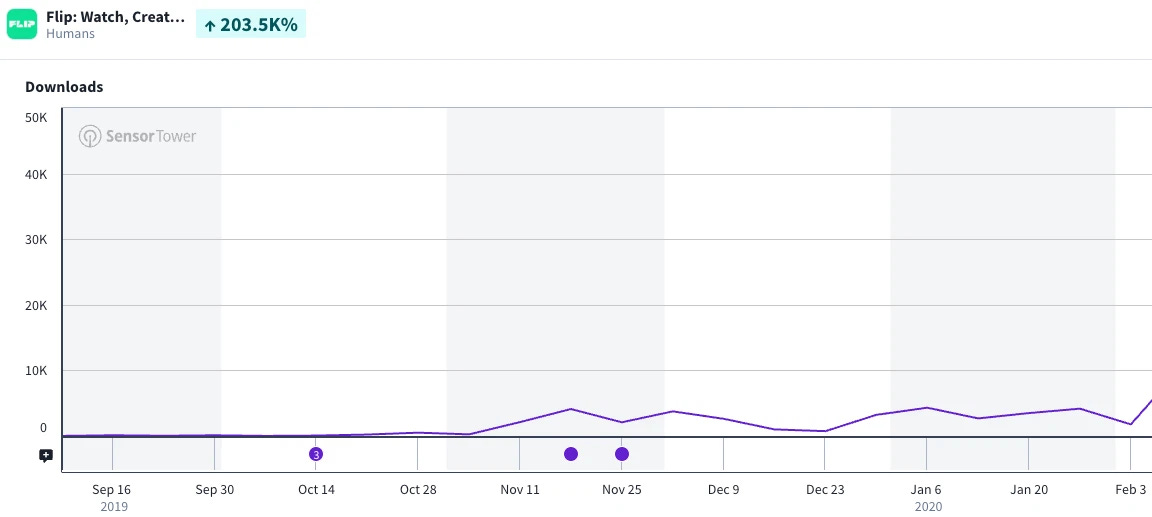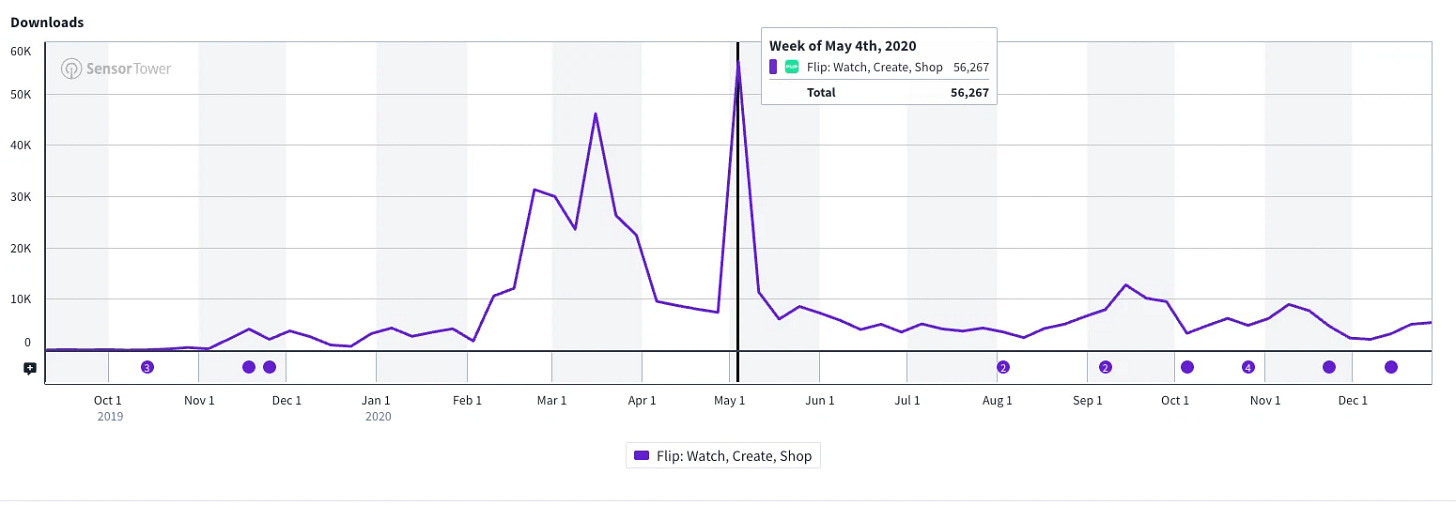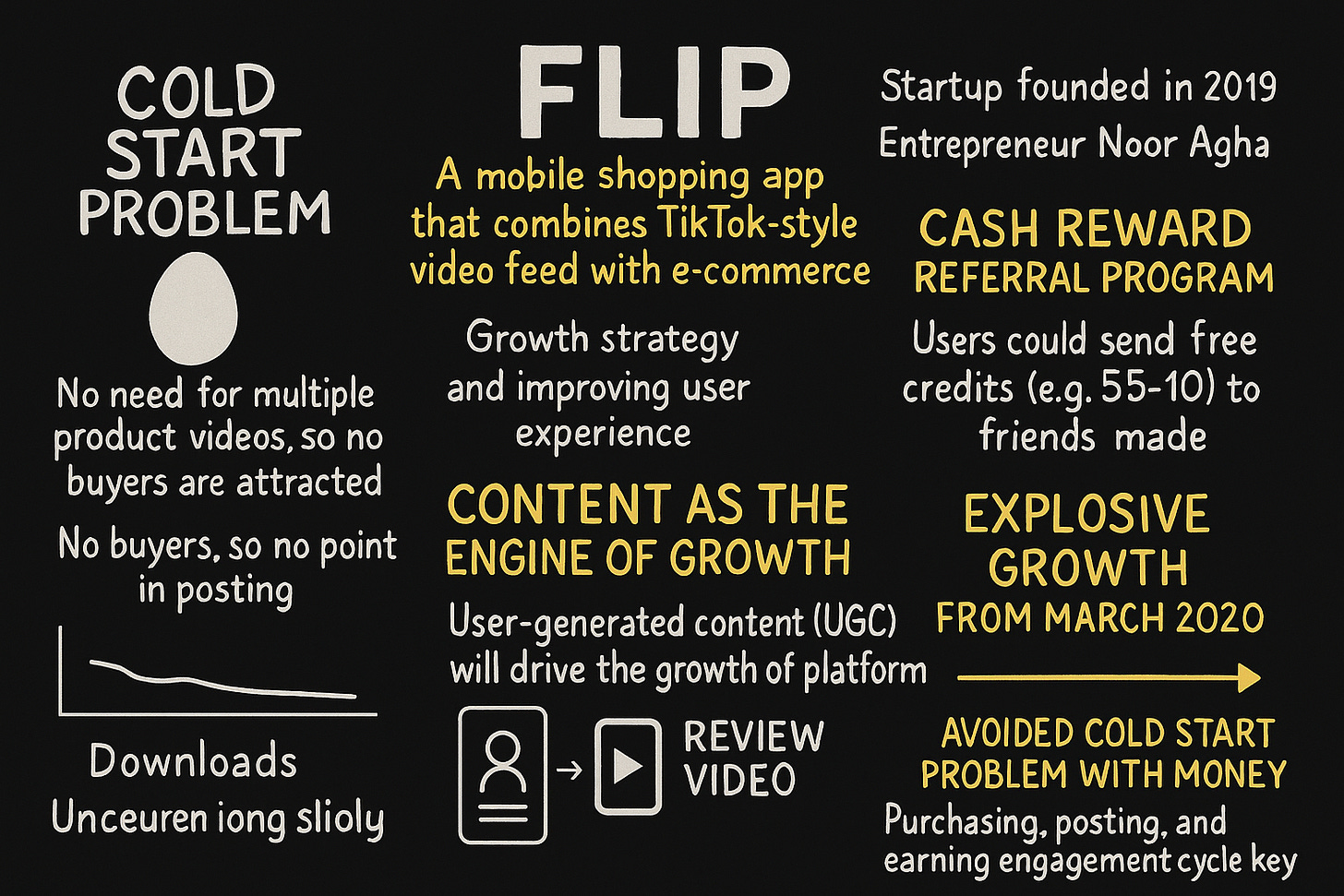How Flip Solved the Cold Start Problem—And Built the TikTok of E-Commerce
In the brutal world of consumer apps, most marketplaces die before anyone notices they were even born. They succumb to what systems theorists call the cold start problem—a paradoxical trap where buyers need sellers, sellers need buyers, and neither side arrives first. It's a classic chicken-or-egg dilemma, and in the context of e-commerce, it can be fatal.
Flip, a startup founded in 2019 by Iraqi immigrant Noor Agha, faced that exact conundrum. His vision was daring: create a mobile shopping experience that looked and felt like TikTok, where every product review was a short-form video, and every user could be both buyer and creator.
For nearly two years, Flip quietly struggled. Downloads were sparse. The app sat in limbo—alive, but inert. But behind the scenes, Agha wasn’t waiting for a miracle. He was building one.
The Cold Start Trap—and How Flip Escaped It
In social marketplaces, value only emerges when enough nodes connect. Without product videos, no shoppers arrive. Without shoppers, no creators bother posting. Without both, no brands care. Flip was locked in this self-reinforcing stalemate.
Agha understood the stakes. Instead of brute-forcing his way through with ads, he leaned into the behavioral mechanics of network formation. His insight: people will post if the reward feels tangible—both psychologically and financially.
Content as Currency: The Engine of Flip’s Growth
At the heart of Flip’s turnaround was a simple but potent thesis: user-generated content is the engine of trust. In the age of Instagram filters and AI fakes, authentic video reviews became a form of social proof. The more people saw others like them trying products on camera, the more real the marketplace felt.
To ignite this loop, Flip focused on simultaneously stimulating creation and consumption. They worked directly with early users and micro-influencers, encouraging them to post raw, genuine video reviews. In behavioral terms, this created a feedback loop of contribution and recognition—users felt seen, heard, and rewarded.
A Referral Program That Felt Like a Gift, Not a Gimmick
Then came the inflection point: in early 2020, Flip introduced a cash-based referral system with an unusually high degree of virality baked in.
Unlike typical affiliate models, Flip allowed users to send $5–$10 in shopping credit directly to friends, which could only be redeemed on the platform. If the friend made a purchase, both parties received additional rewards. This small behavioral nudge tapped into a powerful motivator: social generosity. You weren’t just referring a product—you were gifting an opportunity.
What followed was predictable—but only in hindsight. Starting February 2020, growth accelerated. By March, the app was exploding in usage.
This wasn’t just marketing. It was behavioral liquidity: using cash not to buy installs, but to remove social friction. The friend now had a reason to shop. And once they did, they entered Flip’s tight feedback loop: buy → review → earn → repeat.
From Obscurity to Millions: The Compound Effect
By the summer of 2023, Flip had surpassed 2 million users. It did so with no celebrity backing, no massive brand blitz, and no viral TikTok dance.
What Flip understood better than most is that marketplaces are not built—they are grown. And growth doesn’t begin with users. It begins with usefulness.
What made Flip succeed where others failed was not just the referral scheme or the TikTok-like interface. It was the design of a psychologically sound engagement cycle:
Buy a product.
Post a video review.
Get rewarded.
Feel like a micro-influencer.
This turned passive shoppers into active contributors. It replaced traditional shopping with a form of identity performance—buying was no longer private consumption, but public expression.
Flip and the Social Physics of Modern Commerce
Flip’s rise is a case study in how modern consumer platforms succeed not by serving transactions—but by choreographing behavior.
Its key lessons?
Start with the user journey, not just the user base. Make the act of buying feel meaningful.
Embed status, visibility, and monetary feedback into the core loop.
Treat content as infrastructure—because in the digital economy, trust is built in frames per second.
In an age where everyone wants to be seen and everyone’s tired of being sold to, Flip did something radical: it turned shopping into a stage. And millions showed up.
Keep reading with a 7-day free trial
Subscribe to Consumer App Lab to keep reading this post and get 7 days of free access to the full post archives.





